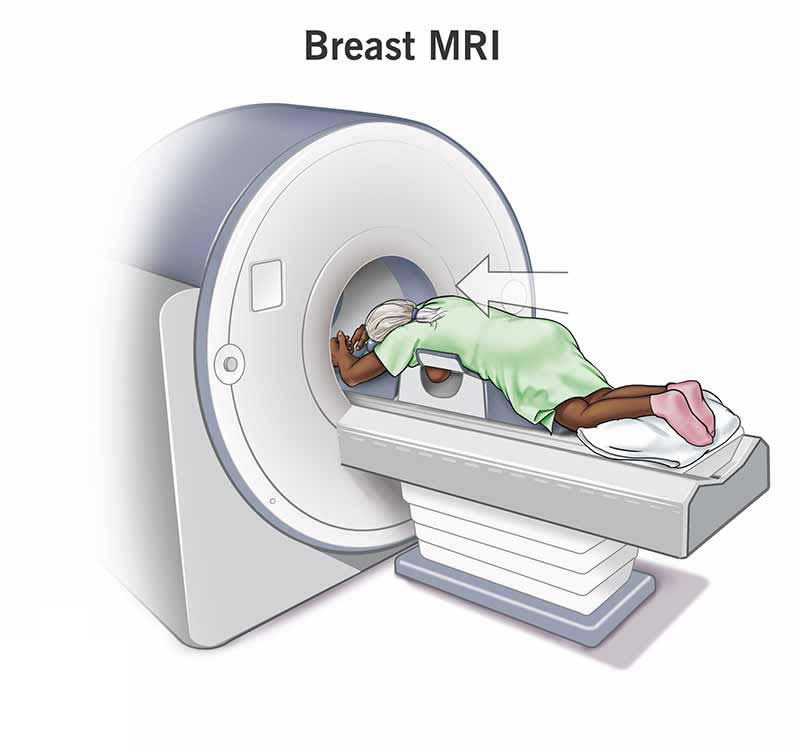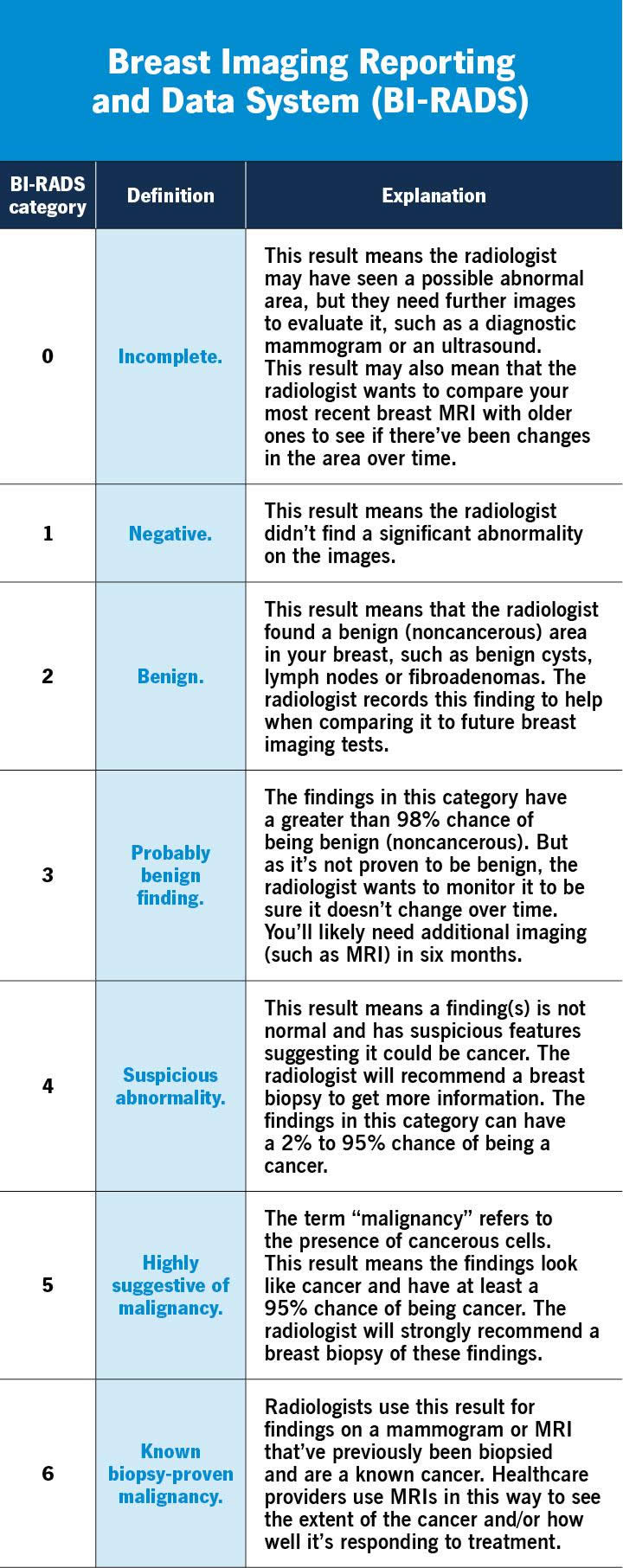Breast MRI
A breast MRI is an imaging test that creates very detailed pictures of your breast tissue. Healthcare providers mainly use it to evaluate known breast cancer. But they also use it with mammography and ultrasound to screen for and diagnose breast cancer and other breast abnormalities.
What Is a Breast MRI?
Breast MRI is a type of imaging test that uses a strong magnet, radio waves and a computer to create detailed images of breast tissue. Your healthcare provider may use a breast MRI along with a mammogram to screen for breast cancer. They may also use it to biopsy breast tissue and check for cancer or see how much cancer has spread.
Why is a breast MRI done?
Your healthcare provider may recommend a breast MRI for several reasons, including to:
- Screen for breast cancer if you’re at high risk or if you have dense breast tissue
- Check breast implants for rupture or cancer
- Measure how far cancer has spread into your nipple, skin or chest wall muscle
- Look for other cancers or abnormal tissue in your breast
- Check for enlarged lymph nodes in your armpit
- Monitor breast cancer treatment progress or recurrence
Depending on the reason for a breast MRI, the test may require an injection of contrast dye (called gadolinium). For many breast MRIs, a technologist or nurse will place an IV in your arm so they can inject contrast dye. This helps a radiologist see structures in your breast more clearly.
Test Details

What happens during a breast MRI?
Before your breast MRI, it’s important to tell your radiologist or radiology technologist if you:
- Are pregnant or breastfeeding
- Can’t lie on your stomach for 30 to 60 minutes
- Have had an allergic reaction to contrast dye
- Have claustrophobia
- Have medical devices or metal objects in your body
- Are wearing a medication patch (like birth control or nicotine)
Ask the provider who manages your device what they recommend you do for your MRI.
What should I expect during the procedure?
During a breast MRI, you’ll change into a gown and lie face down on a table with openings for your breasts. If you need contrast dye, your provider will place an IV. The table slides into the MRI machine. The machine can be noisy, so you’ll get earplugs. You’ll need to stay very still while the technologist operates the scan from another room. You can talk to them, and they can talk to you through an intercom. Once the images are complete, they remove the IV (if you had one) and you can go home.
How long does a breast MRI take?
A breast MRI takes about 20 minutes. But facilities plan for up to 60 minutes for preparations like IV placement and getting you in the right position.
What are the risks?
There’s very little risk to getting a breast MRI if you and your technologist follow the safety guidelines. The possible risks are:
- Allergic reaction to contrast dye: This is rare, usually mild and quickly treated.
- False positives: MRI is very sensitive and may flag normal tissue as abnormal, leading to more tests.
Results and Follow-Up
What should I expect after the exam?
You can continue your usual activities after a breast MRI. But if your exam was an MRI breast biopsy, follow the at-home instructions your provider gives you. If you took a sedative for your exam, you’ll need someone else to drive you home.
What type of results do you get from a breast MRI?
The results of your MRI should be available in your electronic medical records account within a few business days. The provider who ordered the test will discuss the results with you.
Your MRI report may look different depending on why you had a breast MRI. If your results are abnormal, your provider will recommend more imaging tests or a breast biopsy.
All radiologists use the same standardized system to describe screening and diagnostic breast imaging results. This system is called the Breast Imaging Reporting and Data System (BI-RADS). It categorizes results on a scale of 0 through 6.

Additional Common Questions
What is the difference between a breast MRI and a mammogram?
Healthcare providers use mammograms and breast MRIs to help detect breast cancer and other breast abnormalities.
Mammograms are usually the first option for screening and diagnosis of breast cancer.
There are also differences in how the two imaging tests work.
| Mammogram | Breast MRI |
|---|---|
| Uses X-rays | Uses magnets and radio waves (no X-rays) |
| Compresses (squeezes) your breasts | Doesn’t require compression |
| No contrast dye (no IV) | Usually requires contrast dye with an IV |
| Takes two to three minutes | Takes 17 to 20 minutes |
| Mammogram | |
| Uses X-rays | |
| Breast MRI | |
| Uses magnets and radio waves (no X-rays) | |
| Compresses (squeezes) your breasts | |
| Breast MRI | |
| Doesn’t require compression | |
| No contrast dye (no IV) | |
| Breast MRI | |
| Usually requires contrast dye with an IV | |
| Takes two to three minutes | |
| Breast MRI | |
| Takes 17 to 20 minutes |
A note from Wockr
A breast MRI can help check for breast cancer and other changes in your breast tissue. It’s normal to feel anxious before an MRI. You may have lots of questions or concerns about what the test results show and what they mean for your health. Don’t hesitate to raise your concerns with your healthcare provider.